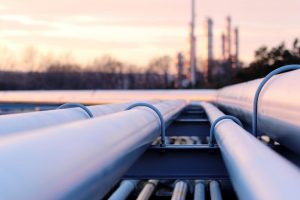 The energy industry is in the midst of a massive transformation. Natural gas fired power plants are now the dominant source of electric power in the U.S., and according to numerous studies, natural gas will continue to have a role in our future energy system — even in stringent greenhouse gas reduction scenarios. For the first time ever, renewables supplied more generation than coal in April. New technologies, evolving customer expectations and state laws directing greenhouse gas reductions are driving significant changes in the way we use and consume energy. The pace of this change will be even further accelerated as we turn to electrification as a means of decarbonization.
The energy industry is in the midst of a massive transformation. Natural gas fired power plants are now the dominant source of electric power in the U.S., and according to numerous studies, natural gas will continue to have a role in our future energy system — even in stringent greenhouse gas reduction scenarios. For the first time ever, renewables supplied more generation than coal in April. New technologies, evolving customer expectations and state laws directing greenhouse gas reductions are driving significant changes in the way we use and consume energy. The pace of this change will be even further accelerated as we turn to electrification as a means of decarbonization.
Regulators must reevaluate their policies and rules to ensure they are keeping up with these major changes. This is particularly true for the current revenue model of gas pipelines, which is built on the idea that “the more you spend, the more you earn.”
As EDF recently advocated to the Federal Energy Regulatory Commission, this model needs to evolve from a focus on “steel in the ground” to one that values more efficient use of existing infrastructure. The U.S. currently has 300,000 miles of gas transmission pipelines. According to the Department of Energy, average capacity utilization between 1998 and 2013 was just 54%. To meet the demands of a more dynamic energy system, we need to incentivize pipeline infrastructure decisions that will maximize public benefit, reduce ratepayer risk and meet our emission goals.
Current framework
Under the traditional regulatory framework, companies earn profits based on how much they invest in new infrastructure. A good example of this is the natural gas pipeline network. Since 1999, FERC has approved 400 pipeline applications for an additional 180 billion cubic feet per day of pipeline capacity (peak consumption of natural gas in the U.S. was 137 Bcf/D during the 2014 polar vortex). This extensive build-out suggests a diminished need for new pipelines.
Federal regulators should reevaluate the incentive model for gas pipelines Share on XBut if system build-out is no longer a primary objective, regulators need to find new ways to direct capital investment rather than simply incentivizing more steel in the ground. In order to do this, we need regulatory policies that create incentives for pipeline companies to innovate and provide value-based products and services.
Reevaluating incentives
We’ve seen these types of incentives at work in several states. For example, Hawaii’s Ratepayer Protection Act sets a 2020 deadline for the state regulator to establish incentives and penalties that link utility revenues to various customer-focused performance metrics, including the rapid integration of renewable energy and the interconnection of on-site solar and battery storage. The legislature found that the century-old business and revenue model is no longer working.
In New York, EDF helped shape the state’s energy transformation initiative, Reforming the Energy Vision (REV), to ensure utility companies are paid for saving their customers energy and money instead of adding more customers and selling more electricity. These same concepts are also relevant in the interstate natural gas market, where a new focus on the value of gas delivery services is needed.
We know that gas generators do not consume gas in even amounts over the course of the day. As more renewables come online, we can expect generators’ use to become even more dynamic as solar and wind energy displace gas at certain times of the day. This underscores the importance of ensuring the needs of generators are aligned with the services provided by gas pipelines. A recent report commissioned by the interstate pipeline trade association, finds that the pipeline industry can support the integration of renewables on the grid by providing hourly rate structures to account for their variability and time of use. But to date, pipelines have not had the appropriate incentives in place to provide these services.
A new approach
EDF and Energy Income Partners, an investor adviser that oversees about $6 billion annually in assets, recently explained to FERC how incentive ratemaking would benefit customers, shareholders and the environment. We detailed how incentivizing more efficient use of existing pipelines would likely reduce the need for new infrastructure and reduce environmental impacts. As the CEO of Energy Income Partners noted: “As an investor, I believe pipeline companies should be working to improve efficiency of existing assets. Building unnecessary pipelines is risky to investors and a waste of capital.”
FERC should take this opportunity to align its market rules with a more renewable, responsive and lower carbon energy system, which would benefit consumers, shareholders and our climate.









